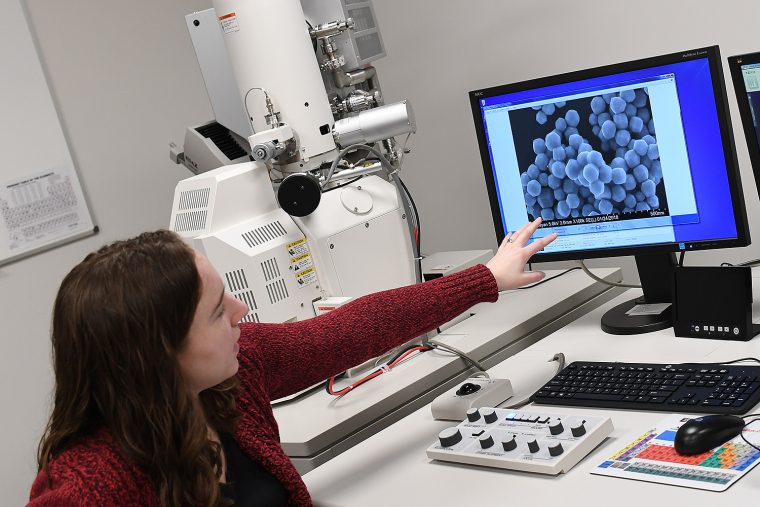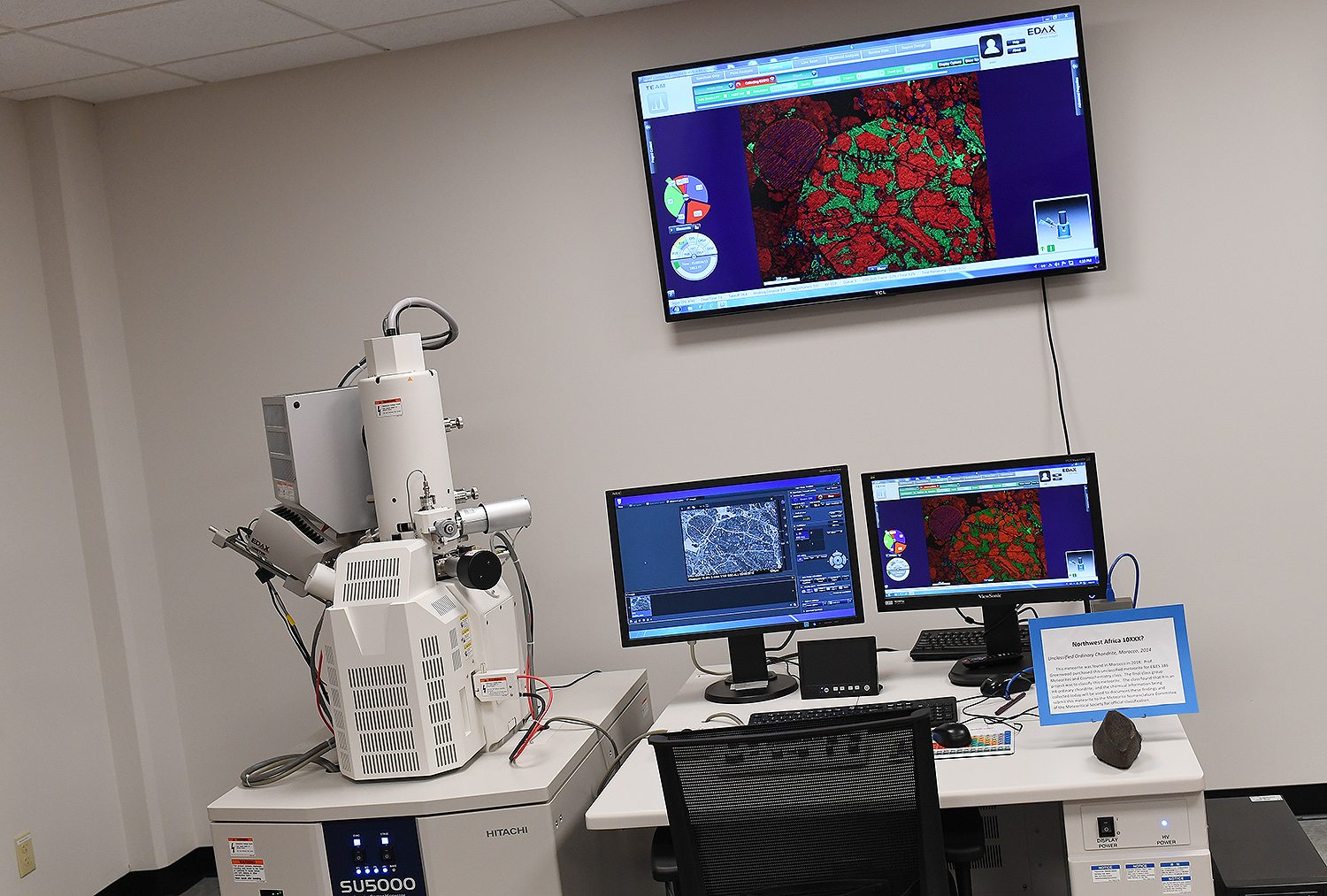NSF Grant Supports Field-Emission Scanning Electron Microscope Purchase



By using a newly acquired electron microscope, the E&ES 368 Meteorites and Cosmochemistry class was able to classify a meteorite discovered in Morocco.
“We were able to determine that it was an H4 ordinary chondrite, and the chemical information being collected today will be used to document these findings and submit this meteorite to the Meteorite Nomenclature Committee of the Meteoritical Society for official classification,” said class instructor Jim Greenwood, assistant professor of earth and environmental sciences.

Wesleyan acquired the field-emission scanning electron microscope (FE-SEM) with support from a $202,300 National Science Foundation grant awarded in August 2017. Greenwood and Michelle Personick, assistant professor of chemistry, applied for the grant through the NSF’s Major Research Instrumentation and Chemistry Research Instrumentation Programs. Wesleyan faculty Renee Sher, Martha Gilmore, Dana Royer, Ellen Thomas, Phil Resor, Suzanne O’Connell, Tim Ku, Johan “Joop” Varekamp and Ruth Johnson also contributed to the grant application.
“The SEM is a versatile tool that enables researchers to simultaneously obtain a wealth of different information about a sample, including topography, composition and fine structure,” Personick said. “At Wesleyan, the research enabled by the microscope addresses broad-ranging fundamental questions with significant societal relevance, including the sustainable production of chemicals and energy, the origin of the Earth’s oceans, and the relationship between atmospheric carbon dioxide levels and temperature in ancient environments.”
To operate the microscope, a scientist inserts a sample inside a vacuum chamber, and the instrument focuses a beam of electrons on the sample. The electrons interact with the sample to produce an image of the material. Then, a detector is able to “read” the material composition of the electron image and create a colorized, enlarged map of the sample.
Since its acquisition, the FE-SEM has already been integrated into two courses, and plans are underway to add an additional six. Undergraduates, graduate students, department faculty and faculty from surrounding institutions are allowed to use the microscope for research.
“The FE-SEM is a very specialized instrument, but also very versatile,” said Jeff Gilarde, director of scientific imaging. “Researchers from biology, neuroscience, geology, physics and other departments may find the microscope of value to their work.”
The field-emission SEM replaces a 10-year-old SEM. It provides images faster—and at higher magnifications—but most importantly, in higher resolution. The resolution of the old tungsten filament SEM was ~5 nanometers, while the new field-emission instrument has a resolution of ~1.1 nm. (1,000 nm equates to about 0.000039 inches or 0.0001 cm.)
“That doesn’t seem like a big difference, but it’s actually very significant,” explained Personick, who studies bimetallic nanoparticles. For her own research, that translates to being able to see the shape of particles as small as 20 nm versus only being able to see the shape of particles that were 100 nm or larger. She also can view gaps of 1.1 nm between samples, so she knows she’s examining two different objects.
“My group is interested in controlling particle shape and surface structure, so the limitations of the previous SEM meant that we had to do the vast majority of our imaging at Yale, and that imaging could only be done by my graduate students. Now, undergraduates and graduate students alike can use the new instrument to obtain data on a daily basis, rather than having to wait for the grad students to go to Yale once or twice a week,” she said. “More importantly, it means we can see very complex features on the surfaces of our nanoparticles, which are critical to how the nanoparticles behave chemically. With the old SEM, these same surfaces would appear smooth even on very large nanoparticles.”
The instrument also is used—at Wesleyan—in searching for water on the moon and Mars, investigating mineralogy of minerals relevant to Mars, and reconstructing paleo-atmospheric carbon dioxide levels. Researchers studying micropaleontology as well as those exploring fault processes and earthquake mechanics also find it helpful in their research. It’s also used in the analysis of Antarctic marine sediments—exploring sediment geochemistry and diagenesis.
The new microscope is housed on the basement level between Hall-Atwater Laboratory and Shanklin Laboratory, but accessible through Exley Science Center. The microscope is part of Wesleyan’s Advanced Instrumentation Center’s Scientific Imaging Laboratory.

